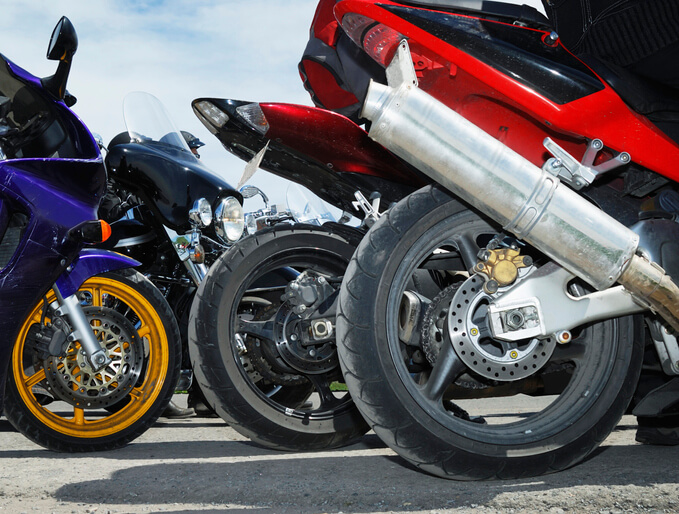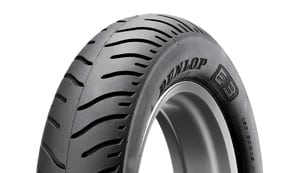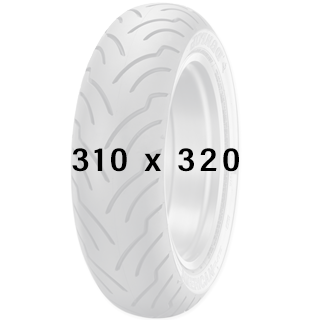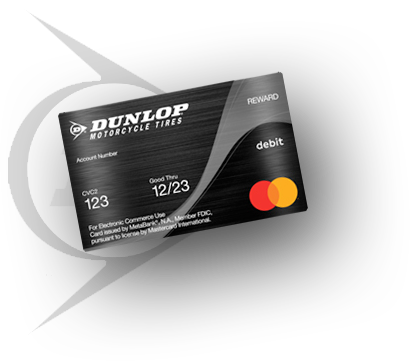The Consequences of Choosing the Wrong Motorcycle Tire Type: Bias-Ply vs. Radial
Motorcycle manufacturers go to a lot of trouble calculating the type and size of tire needed to give optimum motorcycle performance. Weight, carrying capacity, suspension, and speed all play vital roles.
Until the 1970s, choosing a tire was a lot easier, with bias-ply tires being the only tire in the game. Yet, with the advent of large-capacity sports bikes in the 1980s, acceleration and top speeds went off the clock. As a result, the only tire capable of keeping pace was the newly invented radial tire.
While bias-ply tires may appear to have had their day, they remain as popular as ever. Thanks to the enormous worldwide demand for smaller capacity bikes, the surging presence of off-roading bikes, and the popularity of cruiser motorcycles, their future is guaranteed.
At the same time, radial tires continue to lead the world in terms of on-road performance. Advanced materials and innovative construction techniques push the envelope regarding handling, speed, and wet weather capabilities.
Choosing the wrong type of tire for your specific bike could be dangerous. To understand why, let’s first look at the individual properties of both tire types.
Bias-ply Tires
Bias, cross-ply, or cross-belt tires can consist of kevlar cords or multiple thin nylon cords. These band across the tire at an angle of 35-40 degrees. As one strand lays across the tire, the next gets applied in the opposite direction. This method gives the tire a crisscross pattern.
A nylon and kevlar cord woven across the entire radius of the tire gives the bias tire some great features. First of all, the thickness of the tire is uniform around its entire radius. It is this that makes the sidewall strong.
This added strength gives the bias tire exceptional protection against punctures. The stiffer carcass can also handle heavy loads while at the same time providing high mileage. The bias-ply tires’ strong sidewalls make it ideal for off-road riders who can run very low air pressures without damaging the tire.
Apart from being supplied as original equipment on Harley-Davidsons, the cross-ply or bias tire is still one of the most popular replacements for cruiser and vintage motorcycles.
Radial Tires
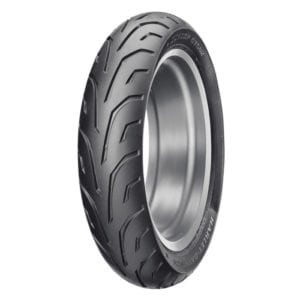
The first stock motorcycle to wear radials was the 1984 Honda VF1000R. Unfortunately, for bias-ply tires, the road-legal production racer was heavy and fast. Bias-ply tires simply couldn’t cope. It is the construction method and materials that make the radial tire so different. For the first time, steel cords or belts laid perpendicular to the tire made the tread and sidewall independent. This ability to tune the tire to specific needs is the greatest asset of the radial tire.
What’s more, today’s technological advances make combining dual compounds on the crown and shoulder of the tread possible. As a result, radial tires can run cooler, faster, longer, and offer higher levels of wet weather grip than ever thought possible.
An Example of an Incorrect Tire Type Choice
Looking at the plus points of both tire types it is easy to identify the pitfalls of fitting the wrong tire type to your motorcycle. But to be sure, let’s take a look at this example.
Harley Davidson motorcycles, for instance, are known for their massive and heavy cruisers and touring motorcycles. If you were to install a radial tire on your Harley Davidson, you’d be setting yourself up for failure. Radial tires are for more sportier motorcycles, allowing for powerful performance and speed. Equipping your Harley Davidson with bias-ply tires would be the right choice, since they are more suitable for heavier motorcycles and load.
Can You Mix and Match Tire Types?

It’s a case of ‘horses for courses’ regarding bias- and radial tires. But what about the hard and fast belief that you can’t mix bias and radial tires on the same bike?
In general, this is sound advice as both tires have such different qualities. A combination of the two would create unstable handling characteristics.
So does that mean that bias and radials do not perform well combined? Interestingly, they do, yet, there is a huge ‘but.’ Both Harley-Davidson and Triumph supply new bikes with this tire mix. Some of Harley-Davidson’s Softail CVO models, due to the difference in wheel sizes, run a 240-18 radial on the back and a 130-19 bias-ply on the front.
Meanwhile, Brit-bike manufacturer Triumph does something similar with their Street Twin range, using a radial rear and bias-ply front tire. And now comes the ‘but’ mentioned earlier.
While it’s a bad idea to mix these two tire types on most motorcycles, Harley-Davidson and Triumph worked closely with tire manufacturers to get it right.
Harley-Davidson worked with Dunlop Tires. The leading tire manufacturer went into overdrive designing and testing this tire combo before Harley-Davidson signed off, to ensure it met their standards of safety and performance.
This fact also answers the other frequent tire question. Do manufacturers design motorcycle tires to work in pairs or is it sales hype?
Well Dunlop’s ability to combine the two very different tire types to work on such a large, heavy motorcycle is because the manufacturers want a specific feel and balance to the motorcycles that can be achieved by mixing the tires.
Do you need professional advice on the best tire type for your motorcycle? Click here to find your nearest Dunlop Motorcycle Tires Dealer.

